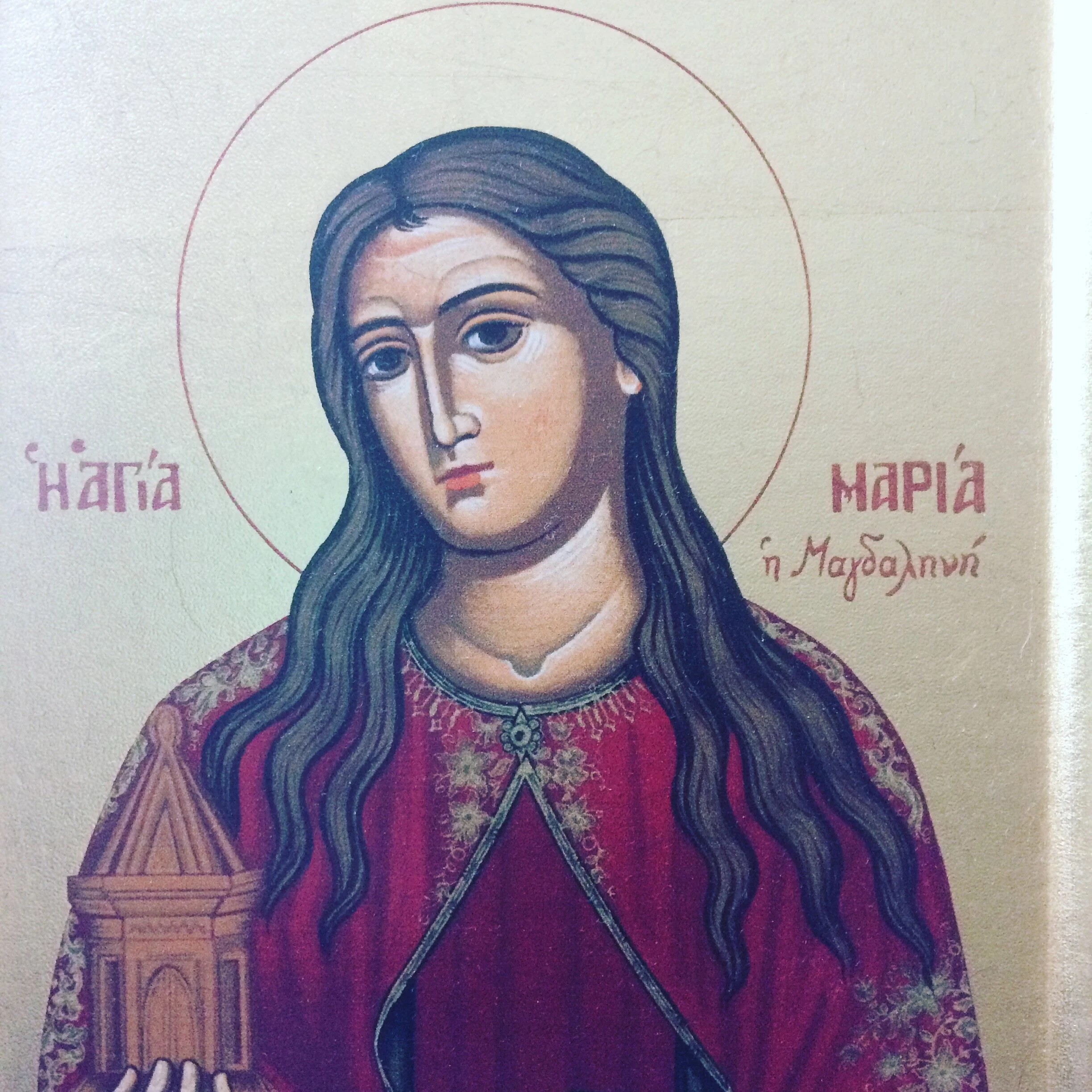Remembering Mary from Magdala
Mary Magdalene is one of the most mis-remembered women in history. She is mostly remembered as a demon-possessed sex worker and sometimes thought to be a would-be lover of the Messiah if he were to give into such impulses. Popular portrayals of Mary can be found in the Da Vinci Code, Godspell, The Last Temptation of Christ (in which she is the the last temptation!!!), and even Family Guy. But what does the biblical text actually say about Mary? And how did her legacy get so twisted? And how can we think about what her legacy actually is? Since today, July 22, is her feast day, let’s take the time to get her story straight.
New Testament Portrayals
The only part of her popular contemporary legacy that has any biblical basis is that she was exorcised of 7 demons (Luke 8:1-2; Mark 16:9). Let me stress, underline, and ALL_CAPS that the understanding of demon possession in the ancient world was not simply a reflection of some sort of moral failing. Demons were thought to be responsible for a whole litany of human problems - from sickness to bad luck. Sure, we can imagine that she was possessed because she was sinful, but we might also imagine that Mary was extremely ill when she encountered Jesus. The text isn’t clear, and I, for one, am in favor of giving Mary the benefit of the doubt.
Beyond her history of possession, Mary is explicitly said to be the first person to whom Jesus appeared (Mark 16:9). In Matthew 28:9-10, Mary and the “other Mary” (not Jesus’ mother — the other one!) encounter Jesus who sends them to tell the disciples to go to Galilee. In John 20:14-18, Mary encounters Jesus in the garden, first mistaking him for the gardener before he simply calls her name and she sees him for who he is. It’s really a quite beautiful moment. In each of these accounts, Mary is commissioned to deliver the explanation of the empty tomb to the male disciples (Mark 16:7, Matthew 28:7, and John 20:17). She is sometimes referred to as the Apostle to the apostles.
How Did We Get So Confused?
The assumption that Mary was a sex worker is actually an unfair conflation of Mary with other women in the Gospels. Mary’s unsuccessful attempt to anoint Jesus in the tomb often gets linked to three other anointing scenes: Mark 14:3-9 with its parallel in Matthew 26:6-13, John 12:1-8, and Luke 7:36-50. In each of these three scenes, a different woman is described as anointing Jesus’ feet. Only in the case of Luke 7:36-50 is the woman actually presented as a sex worker (which probably meant that she was a slave woman, but that’s a detail for another day). None of those women, not least the sex worker, are named and none of them are Mary Magdalene.
The Erasure of Mary Magdalene
In Galatians 1:18-19, Paul talks about how, after his encounter with the risen Christ on the road to Damascus, he went to Jerusalem and spent some time with Peter and James only. He makes no mention of Mary, or any of the other disciples. Paul also omits Mary from his list in 1 Corinthians 15:5-8 of those who encountered the risen Christ, even going so far as to say that Christ appeared to Peter and the other disciples first. Now, if Paul learned the story from Peter and James when he was in Jerusalem, then that means that Peter and James omitted the women from the story. The alternative is that Paul chose to omit them. Since the Gospels were written after Paul wrote his letters (Paul was writing in the 50s and the Gospels were written from the late 60s to perhaps the 80s), perhaps the Gospel writers told the story of the women to set the record straight.
Mary’s Legacy
Mary’s legacy is so much more than “reformed sinner.” She was a faithful follower of Jesus, even to end. She was there when he died and she encountered him first when he rose. She is a model of leadership and devotion for all. It’s high time we got her story right.
Jill Engelhardt
Jill Engelhardt is a PhD in New Testament. She graduated in 2019 from Brite Divinity School in Fort Worth, TX. She is a published author and freelance writer. She has been a member of Divine Life church for the better part of 15 years. She lives in Fort Worth with her husband and her dog.


